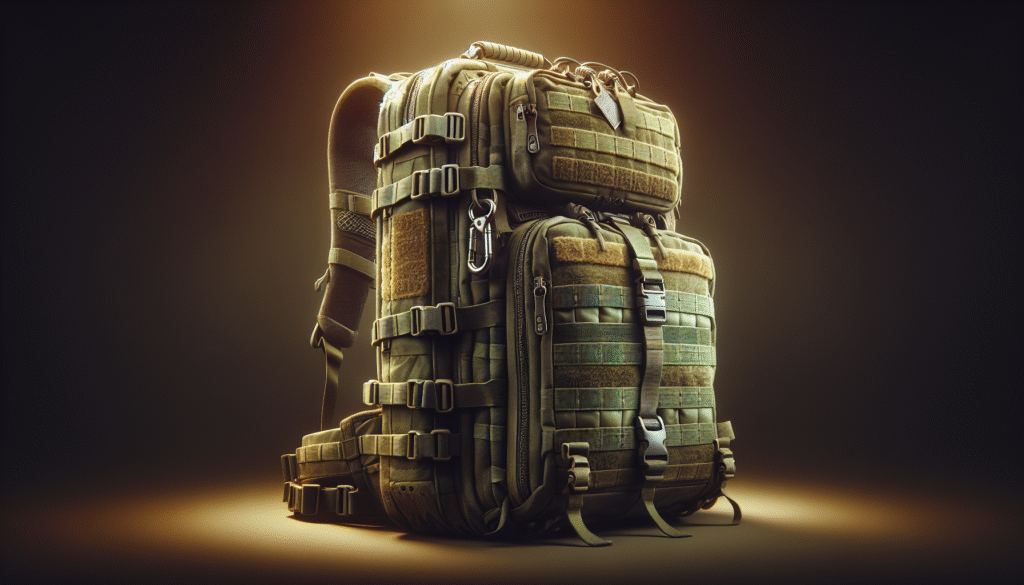? Are you ready to build a 72-hour survival kit that will truly support you and your loved ones during the first critical days after an emergency?

What Should Be In A 72-Hour Survival Kit?
A 72-hour survival kit contains the essential items that will help you survive for three days if you are forced to evacuate or if services are disrupted. You should think of it as a compact, portable cache of water, food, medical supplies, tools, and personal items that meet basic needs for shelter, warmth, hydration, and safety.
Why a 72-hour kit matters
You might assume help will be immediate after a disaster, but in many situations first responders can be overwhelmed or inaccessible during the initial 72 hours. Having a well-prepared kit increases your resilience and reduces stress while you wait for assistance or make a safe plan to reach help.
Who needs a 72-hour kit
Everyone should have one: households, people with medical needs, workers, commuters, and pet owners. You should tailor your kit to your specific needs, health conditions, number of family members, and typical hazards in your area.
Core Principles When Building Your Kit
Follow simple principles to make your kit practical and usable when stress is high. Keep it portable, organized, and replenished, and make sure everyone in your household knows where it is and how to use its contents.
Portability and accessibility
Your kit should be easy to pick up and carry so you can evacuate quickly. Use a backpack, duffel, or rolling bag and store it where you can grab it immediately—near your primary exit or in your vehicle.
Organization and labeling
Organize items into clear categories inside the kit so you can find what you need fast. Use labeled pouches or resealable bags and keep an inventory checklist so you can perform quick inspections and replacements.
Water and Hydration
Water is the single most critical item in any survival kit. You need at least one gallon per person per day for drinking and minimal hygiene, so plan for a minimum of three gallons per person for a 72-hour kit.
How much water to include
You should include a minimum of three gallons of water per person for 72 hours. If you live in a hot climate or have small children, elderly family members, or people with medical needs, add extra water to your kit.
Water storage options
Store water in sturdy, food-grade containers, collapsible water bladders, or commercial emergency pouches. Rotate water every six months if using opened containers, or follow the manufacturer’s shelf-life guidance for sealed pouches.
Food and Nutrition
Your kit should include non-perishable, calorie-dense, and easy-to-prepare foods that require little or no cooking. Focus on items with long shelf life and balanced nutrition so you maintain energy and morale.
Types of food to include
Select ready-to-eat canned goods, vacuum-sealed meals, energy bars, dried fruit, peanut butter, and high-calorie snack items. Choose foods your household will actually eat so nothing goes unused when you need it.
Preparation and utensils
Include a manual can opener, eating utensils, and a lightweight camping stove or single-use fuel canisters if you want to prepare hot meals. Remember to pack matches or a lighter, stored in a waterproof container.

Shelter and Warmth
Keeping warm and sheltered is essential, especially in cold or wet conditions. Your kit should include compact shelter items that can be deployed quickly to protect you from the elements.
Shelter items to include
Pack an emergency blanket (mylar), a compact sleeping bag or emergency bivy, and a lightweight tarp or poncho. For improvised shelter, include paracord and tarp clips so you can construct a simple shelter if needed.
Clothing and layering
Include an extra set of clothing for each person: moisture-wicking base layers, insulating mid-layers, a waterproof shell, wool or synthetic socks, sturdy shoes, and a hat and gloves. Replace seasonal clothing as appropriate and rotate to keep everything usable.
First Aid and Medical Supplies
A robust first aid kit can treat minor injuries and stabilize serious conditions until professional care is available. You should personalize the kit for your household’s medical needs.
Basic first aid essentials
Your kit should include adhesive bandages, sterile gauze pads, adhesive tape, antiseptic wipes, antibiotic ointment, tweezers, scissors, medical gloves, and a CPR face shield. Include pain relievers, antihistamines, and a digital thermometer.
Prescription medications and special medical devices
Store at least a seven-day supply of prescription medications (preferably 30 days if possible), along with clear instructions, dosage schedules, and copies of prescriptions. If you use an inhaler, insulin, or other medical devices, include refrigeration packs if needed and extra batteries for medical devices.

Personal Hygiene and Sanitation
Maintaining hygiene reduces the risk of infection and improves comfort during stressful situations. Include items that enable basic sanitation and waste management.
Hygiene items to pack
Include travel-sized soap, hand sanitizer, toothbrushes, toothpaste, feminine hygiene supplies, a small towel, and baby wipes. Pack a roll of toilet paper and plastic bags for waste disposal.
Sanitation and waste management
Add disposable waste bags, a small trowel for outdoor waste if necessary, and absorbent kitty litter or sawdust for urine and other fluids. Consider a portable travel toilet or collapsible toilet seat if you have space.
Tools and Equipment
A few versatile tools can make a big difference when you need to repair, build, or open items. Focus on lightweight, durable tools that you can use for multiple tasks.
Essential tools
Include a multi-tool or Swiss Army knife, a fixed-blade knife for heavy tasks, duct tape, paracord (50–100 feet), a wrench or pliers to turn off utilities, and a compact shovel. Also include a small roll of electrical tape and zip ties.
Lighting and power
Pack a reliable flashlight with spare batteries, a headlamp for hands-free tasks, and chemical light sticks for longer illumination. Consider a hand-crank or solar-powered rechargeable battery pack and USB cables to charge cell phones or small devices.

Communication and Navigation
Being able to receive warnings and communicate your status matters. Include multiple ways to get information and signal for help.
Communication tools to include
A battery-powered or hand-crank NOAA weather radio will keep you informed of threats. Include a fully charged power bank, extra charging cables, a backup cell phone or prepaid phone card, and a whistle for signaling rescuers.
Navigation and documentation
Pack a local map and compass and know how to use them if GPS is unavailable. Keep printed copies of important documents in waterproof bags: IDs, insurance papers, medical records, emergency contacts, and a written family plan.
Lighting, Fire, and Heat Sources
You should plan for reliable light and safe ways to make heat. Avoid open flames indoors and ensure any heat source is used safely.
Fire starters and warmth
Include waterproof matches, a lighter, and multiple fire starters like tinder tabs or cotton balls coated in petroleum jelly. For heat, include hand warmers, warm blankets, and a compact portable stove if you know how to use it safely outdoors.
Safe lighting practices
Use LED flashlights and headlamps to conserve batteries. Never use indoor stoves, grills, or generators inside enclosed spaces—these generate carbon monoxide and can be deadly.

Special Considerations: Children, Seniors, and Pets
You should customize your kit for vulnerable family members. Children, elderly people, and pets have specific needs that require additional items and preparations.
Kids and infants
Include diapers, formula, baby food, bottles, a small blanket, comfort items, and any medications. Also carry copies of important medical and vaccination records for children.
Seniors and people with disabilities
Add mobility aids, extra batteries for hearing aids, documentation of medications, and any special nutrition or medical supplies. Ensure caregivers have a plan and that the kit’s contents are easily accessible.
Pet supplies
Pack three days of pet food and water, a sturdy travel carrier or leash, a collapsible food bowl, and your pet’s medications and vaccination records. Include plastic bags for waste and a familiar toy to reduce stress.
Important Documents and Money
Physical copies of critical documents can prevent delays in recovery or accessing assistance. Keep these in waterproof, fire-resistant containers.
Documents to include
Include identification for each family member, copies of birth certificates, marriage certificates, passports, insurance policies, property deeds, bank account information, and contact lists. Add a list of important online passwords kept separately in a secure format.
Cash and payment options
ATMs and card systems can be down during emergencies, so include small bills and coins for at least three days. Store them in a waterproof pouch and keep a backup credit card if possible.
Personal Safety and Self-Defense
Your kit should help you stay safe without escalating risk. Prioritize non-confrontational safety items and know your local laws before including defensive tools.
Safety tools and awareness
Include a whistle, bright clothing or reflective tape to increase visibility, and a personal alarm. A flashlight and multi-tool also serve as deterrents and practical devices. Consider basic self-defense training as part of preparedness.
Legal considerations
If you plan to include weapons or self-defense devices, be sure you understand local laws and store them safely. Training and safe storage are essential to avoid accidents.
Maintenance, Rotation, and Storage
A kit is only useful when its contents are fresh and functional, so you should maintain it regularly. Set a schedule to check, rotate, and test items.
Regular checks and replacements
Inspect your kit every six months to replace expired food, medications, and batteries. Check clothing for wear, test electronic chargers, and refresh water and first aid supplies.
Storage location and backups
Store your kit in an accessible, cool, dry place that you can reach quickly. Keep a secondary kit in your car and consider smaller “grab-and-go” kits for each family member.
Building Kits for Specific Scenarios
You should adapt your kit to typical emergencies in your area—floods, hurricanes, earthquakes, wildfires, blizzards, or prolonged power outages require different emphases.
Urban vs. rural kits
If you live in an urban area, focus on mobility, communications, and navigating crowded environments. In rural areas, emphasize longer-term food and water supplies, tools, and self-sufficiency.
Storms, floods, and fires
For water-related disasters, prioritize sealed documents in waterproof bags, life jackets for flood-prone areas, and a water-purification method. For fires, create an evacuation kit with face masks, goggles, and N95 respirators for smoke.
Checklist: Essential Items by Category
A compact checklist helps ensure you’ve covered the basics and can be printed or copied into your inventory. This table lists typical items, recommended quantities, and short notes.
| Category | Item | Quantity (per person unless noted) | Notes |
|---|---|---|---|
| Water | Drinking water | 3 gallons | Minimum for 72 hours; add more for heat/children |
| Food | Ready-to-eat meals/snacks | 9 meals | High-calorie, non-perishable |
| Shelter | Emergency blanket | 1 | Mylar or space blanket |
| Shelter | Sleeping bag / bivy | 1 | Compact, season-appropriate |
| Clothing | Extra clothes | 1 set | Include socks, underwear, jacket |
| First Aid | Basic kit | 1 | Include meds and necessary prescriptions |
| Hygiene | Toilet paper & wipes | Small roll & travel pack | Sanitation items |
| Tools | Multi-tool / knife | 1 | Durable, reliable model |
| Lighting | Flashlight / headlamp | 1 each | With spare batteries |
| Communication | NOAA radio | 1 | Battery or hand-crank powered |
| Power | Power bank | 1 | Fully charged, solar/hand-crank ideal |
| Documents | Important papers | Copies | In waterproof bag |
| Money | Cash | Small amount | Small bills & coins |
| Pets | Pet food & supplies | 3 days | Per pet, include leash/carrier |
| Special Needs | Medications & devices | 7–30 days | Per your health requirements |
Quick-Reference Maintenance Table
Use this table to track replacement intervals for common kit items. It makes it easy to schedule maintenance and keep your kit functional.
| Item | Replacement interval |
|---|---|
| Water (opened) | Every 6 months |
| Sealed water pouches | Follow manufacturer (often 5+ years) |
| Canned food | 2–5 years depending on food |
| Energy bars | 1–2 years |
| Batteries | Annually or when low |
| First aid supplies | Check every 6 months |
| Prescription meds | Before expiration date |
| Emergency blanket | Replace if damaged |
| Power bank | Replace every 2–3 years or if not holding charge |
Building a Family Emergency Plan
A kit is only part of preparedness; you also need a plan that outlines roles, meeting points, and communication. You should rehearse the plan with household members regularly.
Create clear roles and meeting spots
Designate primary and secondary meeting places—one near your home and another outside your immediate neighborhood. Assign responsibilities like gathering pets, grabbing the kit, or shutting off utilities.
Communication and reunification
Decide on an out-of-area contact person and teach everyone how to text or use that person as a family point-of-contact. Texting often works better than calling when networks are overloaded.
When You Should Use the Kit
Know the triggers that move you from readiness to action. Use the kit if you must evacuate, if city services are down, or if safe access to basic necessities is cut off for reasons unknown.
Immediate evacuation vs sheltering in place
If authorities order evacuation or if the building is unsafe, take your kit and leave. If sheltering in place is recommended, use the kit to increase comfort and self-sufficiency while you wait for instructions.
Car and Workplace Kits
You should keep smaller kits in your car and at your workplace because emergencies can happen while you’re away from home. Tailor these kits to the location and typical commute length.
Car kit essentials
Include water, snacks, a blanket, an extra phone charger, a flashlight, a small first aid kit, and warm clothing. Add jumper cables, a compact shovel, and road flares for winter or roadside emergencies.
Workplace kit essentials
Keep a bag with water, non-perishable snacks, sturdy shoes, a light jacket, and basic sanitation items at work. Add copies of important documents and any work-specific medications.
Frequently Asked Questions (FAQ)
Answering common questions helps you make quick decisions under stress. Here are straightforward answers to frequent concerns you might have.
How often should I update my kit?
You should inspect your kit every six months and after major life changes. Rotate food and water according to expiration dates and update medication supplies before they expire.
Where should I store the kit?
Store it in an easily accessible place near an exit and tell all household members where it is. Keep a secondary kit in your car and consider workplace storage too.
What if I can’t carry a lot?
Prioritize the essentials: water, a compact first aid kit, a few days of food, a flashlight, and a phone charger. Choose lightweight options and focus on mobility.
Final Steps: Putting It All Together
As you assemble your kit, make a clear inventory list, label items with purchase or expiration dates, and pack with usability in mind. Test the kit in a non-emergency to ensure everything works and everyone knows how to use key items.
Practicing and rehearsing
Conduct simple drills to practice grabbing the kit and meeting at your designated spot. Regular practice reduces panic and makes your emergency plan second nature.
Personalize and adapt
Tailor your kit to your household’s size, health needs, and local risks. No two kits are identical, and personalization is what makes your kit truly useful.
Closing Thoughts
A 72-hour survival kit provides critical autonomy and peace of mind during sudden emergencies. By putting together a thoughtful, organized kit and maintaining it regularly, you’ll be prepared to protect your health and safety while making calm, informed decisions in the first days after a disaster.
If you’d like, you can ask for a printable checklist version tailored to the number of people in your household and their specific needs.

